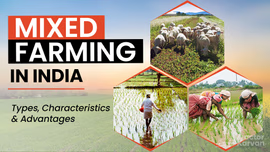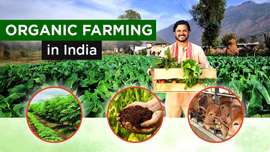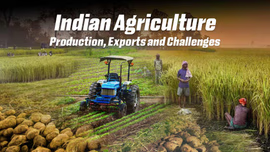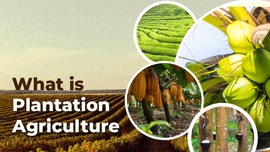Sesame Farming in India: A Comprehensive Guide

Sesame or gingelli is one of the oldest oil seed crops in India. It is also known as “Til” in many parts of India. The sesame seeds or their powder or their oil are used in various Indian dishes as a flavoring agent. In India, the sesame crop can be cultivated as both Kharif and Rabi crop. If you want to start sesame farming, then continue reading this blog till end where we will discuss all the steps involved in the Sesame cultivation.
Table of Contents
- An Overview of Sesame Farming
- What are the Different Types of Sesame Seeds?
- What are the Benefits of Sesame or Gingelly Seeds?
- Sesame Cultivation in India
- Major Sesame Producing States in India
An Overview of Sesame Farming
Sesame, also known as Sesamum Indicum, is a flowering plant from the genus Sesamum. It is known for its white or pale pink flowers and dark green coloured leaves. The sesame seeds contain around 50% oil, 25% protein, and 15% carbohydrates and is a very common ingredient in many cuisines all over the world.
In India, Sesame farming can be done in almost every season as it is low maintenance crop which requires minimal farming support. It can be grown in drought conditions, in high heat, with residual moisture in soil after monsoons are gone or even when rains fail or when rains are excessive.
Sesame is grown in almost all parts of India, but West Bengal, Rajasthan, Maharashtra, Gujarat and Uttar Pradesh are the major sesame growing states. It grows in various seasons like Kharif, Rabi or Zaid. “Til ke Laddoo” are a popular Indian sweet which is consumed during festivals. India is one of the largest oilseed product exporters when it comes to sesame seeds. During FY24, the exports of sesame seeds from India were 525 million US dollar and in FY25 (April-December) it stood at 370 million US dollar.
What are the Different Types of Sesame Seeds?
White sesame seeds, black sesame seeds and yellow sesame seeds are the three types of seeds classified as per the difference in the colour of their germplasm. Among these three, black and white are the most popular sesame seeds in India. Have a look at the image below to know the major difference between the two:
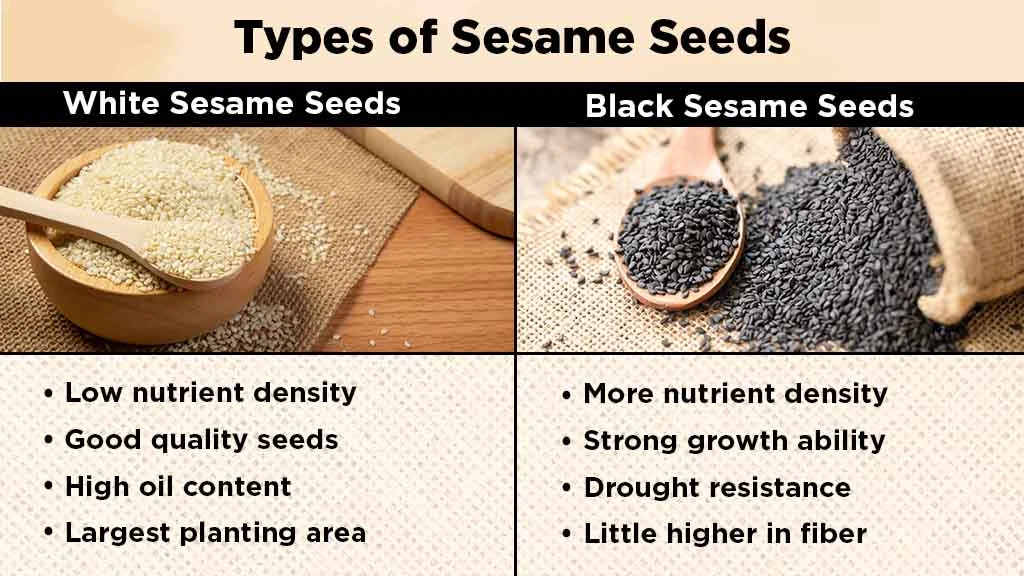
What are the Benefits of Sesame or Gingelly Seeds?
- Sesame seeds are rich in fibers that helps in quick digestion and improve gut health.
- They have high levels of calcium and magnesium which helps develop strong bones.
- Sesame seeds contain two standout compounds, sesamin and sesamol, that are known for their strong antioxidant effects.
- It also balances cholesterol and supports heart health.
Sesame Cultivation in India
Soil & climate, land preparation, sowing method, etc. are some of the important steps involved in the cultivation of sesame. Let’s understand all in more detail.
Soil & Climate Requirements
Sesame requires well drained soil with a pH ranging between 6 to 7. The ideal temperature to grow sesame is between 25 °C to 35 °C. It is a tropical crop which requires a rainfall between 450 – 500 mm.
Land Preparation
Clearing the field is an important step before you start the cultivation process. Plough the field twice with a cultivator or thrice with MB plough. Break the clods with a rotavator to obtain the fine tilth.
Seed Selection and Treatment
Always choose high quality seeds for better yield. Ensure that you are choosing the right variety of seeds of sesame plant as per your climate and soil requirements. Treat the seeds with Carbendazim @ 2g/kg of seeds.
Growing Seasons
It can be cultivated in both Kharif and Rabi seasons. For the Kharif season, the suitable sowing period is from June to July whereas, for the Rabi season, the best sowing time is October to November.
Sowing Method
The recommended seed rate of sesame cultivation is 5 kg / hectare. Sow the seed in lines and mix seeds with sand @ 1:4 ratio and drop in furrows at 3 cm depth at 30 X 30 cm spacing.
Fertilizer Management
The application of fertilizers should be done based on the soil testing. Before the last ploughing, spread FYM or composted coir pith or compost @ 12.5 t/ha then plough and incorporate it.
Irrigation
The soil should be consistently moist but not waterlogged. Irrigate immediately after sowing followed by irrigation at 5-7 days after sowing.
Crop Protection
|
Pest or Disease |
Symptoms |
Management |
|
Leaf webber/ roller and capsule borer |
Webbing of terminal leaves and bore the tender shoots at vegetative phase.
|
Two sprays of Neem oil 2% or NSKE 5 % at 15 days interval. |
|
Leaf hopper |
Curling of leaf edges and leaves turn red or brown.
|
Spray Quinalphos 25 EC @ 800 ml/ac or thiamethoxam 25WG @ 40 g/ac or imidacloprid 17.8 SL @ 40 ml/ac. |
|
Aphids |
Crinkling and curling of leaves.
|
Seed treatment with imidacloprid 600FS @ 7.5 ml per kg seed. |
|
Alternaria leaf blight |
Small, circular reddish-brown spots with concentric rings on leaves.
|
Spray mancozeb at 1000 g/ha. |
|
Root rot / Stem rot/Charcoal rot |
Dark brown lesions at the collar region or the yellowing and defoliation of leaves. Shredding of bark.
|
Seed treatment with Trichoderma viride@ 4 g/kg or soil application of T. viride@ 2.5 kg/ ha with 500 kg FYM @ 30 days after sowing. |
Harvesting & Threshing
Usually, sesame seeds become ready to harvest within 3 to 5 months, but the best harvesting time of sesame seeds occurs when the leaves start turning yellow and start drooping while the bottom capsules are lemon yellow. Harvest before the bottom capsules turn brown. Usually, the sesame seeds are threshed by gentle beating of well dried plants with sticks.
Major Sesame Producing States in India
|
Major States |
Production (lakh tonnes) |
|
West Bengal |
2.31 |
|
Madhya Pradesh |
1.39 |
|
Rajasthan |
0.84 |
|
Uttar Pradesh |
0.74 |
|
Gujarat |
0.49 |


Related Blogs
